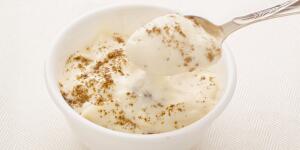-
Nutrition is an important part of wisdom teeth removal aftercare. Along with hydration, you need vitamins, minerals, and plenty of protein to help your body heal and restore healthy mouth tissue. But you can’t eat anything you want. You need to avoid tough, hard or chewy foods. You should also stay away from spicy foods and hot temperatures, as these foods can irritate and disrupt wisdom teeth removal healing. Instead, let hot foods cool to lukewarm or room temperature. Here are some suggestions for foods to eat after wisdom teeth removal.
-
1Flavored Gelatins

Gelatins, such as Jell-O, meet all the requirements of wisdom teeth removal food. Gelatin is soft, cold, and full of protein to promote healing. Plus, there are all kinds of flavors. And you can buy premade cups or make it yourself from gelatin packets. During the first 24 hours after surgery, you may find it’s easier to eat when you make it from the packet and eat it before it fully sets. It will be very soft and liquid-like. Just remember to stay away from cups containing chunks of fruit or other chunky ingredients.
-
2Mashed or Pureed Fruits

While chunks of fruit aren’t a good idea right after surgery, pureed or mashed fruits are fine. In fact, they are a good source of vitamins and fiber. And their texture makes them easy to eat in the first couple of days. Try mashing up ripe bananas or pick up some applesauce from the store. You can choose from several flavors of applesauce. Or puree your own fresh fruits, such as pears or peaches. Stay away from berries and other fruits with seeds that could get caught in your wounds.
-
3Soft Dairy Products

Dairy products provide calcium, vitamins, minerals and protein. You have several choices for eating dairy as food for after wisdom teeth removal. This includes milk, cottage cheese, yogurt, and kefir or other yogurt-like liquids. You can even choose treats like ice cream or frozen yogurt. You can really boost your protein intake by choosing Greek yogurt or Icelandic skyr. But avoid dairy products with seeds or other chunks you must chew. And remember, if you’re drinking your dairy products, don’t use straws. The suction you create can dislodge your clots.
-
-
4Smoothies and Milkshakes

Smoothies and milkshakes are a great way to get dairy and fruits in one place. You could even add vegetables to your smoothies for extra nutrition. Protein shakes and supplemental nutrition drinks, such as Boost or Ensure, are other options. You can make them yourself from powder or buy them premixed. Put your shakes in the blender and add smooth peanut butter for even more taste, protein, and healthy fats. Just remember to avoid foods with seeds and don’t use straws. Drink from the glass or use a spoon instead.
-
5Soups and Broths

Soups and broths give you savory options while you are recovering from wisdom teeth removal. Broths have less nutritional value than soups, but they are thin and easy to eat. Soups can help you feel fuller than broths, but you have to choose the right kind. Smooth soups, such as condensed tomato soup, are best. But you can puree other soups to make them the right consistency. Don’t eat your soups and broths hot. Give them time to become lukewarm or room temperature before eating them.
-
6Mashed Beans and Vegetables

As your recovery progresses, you can start eating semi soft foods. Mashed potatoes are a great option. They are filling and you can add flavor and moisture with gravy. But there are all kinds of other options when it comes to vegetables. Try mashed avocado, sweet potatoes, squash, or beans. These colorful vegetables and legumes add vitamins, minerals and protein. For an extra kick of flavor, try hummus. Just skip the chips, raw veggies, and bread points that you might usually eat with it.
-
7Eggs

By day three, most people can add eggs and other foods that don’t need much chewing. Eggs are an excellent source of protein. They also contain a good variety of vitamins and nutrients. Eating them poached or scrambled counts as soft or semi soft foods. You could even make an omelet with some melted cheese. But don’t add vegetables or meats until you can eat solid foods. When you’re moving to semi soft foods, chew towards the front of your mouth. Try to avoid chewing with the molars closest to your sockets.
-
-
8Soft Cereals and Pasta

Cereals and pasta can help you feel full when you’re on a soft or semi soft diet. But you still need to minimize chewing. Make noodles and macaroni and cheese soft by overcooking them slightly. You can also eat instant forms of warm cereals, such as oatmeal and cream of wheat. These instant cereals don’t require as much chewing as traditional forms, such as steel cut oats. Just make sure to eat these foods warm and not hot. Check your sockets after you eat and gently rinse with a warm saltwater rinse to clean your mouth.
-
9Tender Fish

Fish is another great source of protein. Plus, some types of fish are high in omega-3 fatty acids, which may be especially helpful for oral health and healing. Canned fish is generally easy to eat. And you can cook fresh fish until it is soft and tender. Salmon is a great choice, but you could choose any flaky fish. To add moisture and flavor, consider a smooth sauce to put on your fish. Your doctor will let you know when it’s safe to move to solid food you must chew. This usually takes at least a week.
















